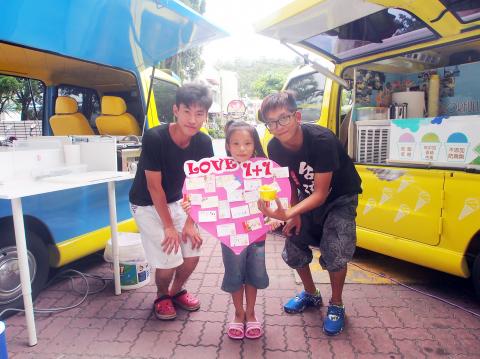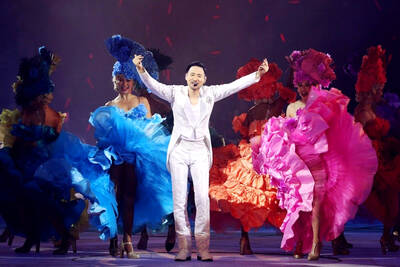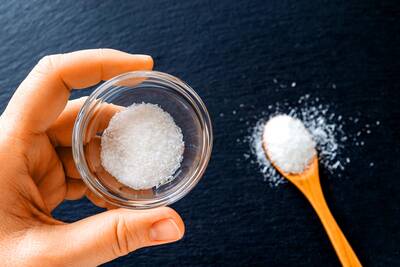Two guys, who were not originally acquainted, teamed up to contribute to society, one selling ice cream and the other selling Mexican burritos at a buy one, get one free deal. When people buy an ice cream or a burrito at their food trucks, they give one away for free to children at the next Taiwan Fund for Children and Families (TFCF) center that the food trucks stop at. Last Sunday morning, children from Taitung’s TFCF saw the playful-looking ice cream truck driving up and excitedly shouted “Thank you Mr. Ice and A-chien” and gave them self-made thank-you cards in exchange for ice-cold ice cream cups.
Kao Chien-hua works in Hsinchu and Lin Hsin-chien is a food truck entrepreneur in Taoyuan. Early in the morning on Sunday last week, Kao and Lin departed from Kenting in Pingtung and arrived at Taitung’s TFCF at around noon. They immediately parked their food trucks and prepared their ice cream and burritos for the kids.
Kao, who often travels around throwing events in his food truck, said it has been a dream for him to drive around the island. To make an island-wide trip more meaningful, he proposed the idea to his company and won strong support from his boss. He then got in touch with the nearby Hsinchu TFCF. Kao wanted to do something nice for the TFCF kids by giving away one for each ice cream he sold. In other words, he wanted to visit popular attractions and for every ice cream sold, he would give a free ice cream to the kids at the next TFCF on the journey.

Photo: Wang Hsiu-ting, Liberty Times
照片:自由時報記者王秀亭
Kao’s companion on the journey around the island, Lin, said he has wanted for a long time to use his food truck for charity, but has been unable to find a method or means. At a food truck gathering, Lin met Kao and the idea struck him that they can achieve more working together, which was when he started to drive his burrito food truck with Kao.
(Liberty Times, translated by Zane Kheir)
兩個原本不相識的人,因為想為社會做點事而湊在一起;一個賣冰淇淋、一個賣墨西哥捲餅,以買一送一的方式,民眾買一個冰淇淋或捲餅,就在下一站的家扶中心相對送出一份給學童享用。上週日上午,台東家扶中心學童看到充滿童趣的冰淇淋胖卡車到來,相當興奮,大喊「冰哥、阿賢,謝謝你!」並送上自繪感謝卡,換一杯冰涼的冰淇淋吃。
在新竹工作的高建華與在桃園以胖卡車創業的林信賢,兩人上週日清晨從屏東墾丁出發,近午抵達台東家扶中心,隨即將兩輛胖卡車就定位,準備要給小朋友享用的冰淇淋與捲餅。
常開胖卡車四處辦活動的高建華表示,環島是夢想,想讓環島更具意義,於是向公司提出這個想法,獲得老闆大力支持,就近向新竹家扶中心聯繫,想以一加一方式送愛給家扶學童,也就是環島至熱門景點,每賣出一球冰淇淋,就會在下個抵達地的家扶中心,送出所賣出的冰淇淋數量給學童享用。
陪著高建華環島的林信賢說,每月一次以胖卡車做公益的想法,存在心中已久,卻苦尋不到方法與管道;一次胖卡車聚會上,認識高建華,心想一起做的力量大,便開著墨西哥捲餅胖卡車一起參加。
(自由時報記者王秀亭)

Even as he grows older, Microsoft founder Bill Gates still fondly remembers the catalytic computer code he wrote 50 years ago that opened up a new frontier in technology. Although the code that Gates printed out on a teletype machine may look crude compared to what’s powering today’s artificial intelligence platforms, it played a critical role in creating Microsoft in April 1975 — a golden anniversary that the Redmond, Washington, company celebrated on April 4. Gates, 69, set the stage for that jubilee with a blog post reminiscing on how he and his old high school friend — the late Paul Allen

Australia’s strict immigration policies have long been criticized, particularly for how they treat people with disabilities. Having been residents of Australia for years, Scottish Laura Currie and her Italian partner, Dante Vendittelli, recently experienced the impact of these immigration policies. Their son Luca, born in Australia and diagnosed with cystic fibrosis, became the reason their residency application was denied due to the anticipated high healthcare costs. Had Luca been healthy, there would have been no objections to their permanent residency. This case not only highlights discrimination against disabled individuals, but also raises questions about fairness and inclusion within Australia’s immigration

A: After holding nine concerts in Kaohsiung and Taipei recently, “God of Songs” Jacky Cheung will stage three extra shows later this week. B: They’re compensation for the three shows he postponed last year due to illness. A: He also canceled three more shows in Guangzhou last month. His health is worrisome. B: When touring Guangzhou, he dedicated his hit “She Is Far Away” to late singer Khalil Fong. That’s so touching. A: Online music platform KKBOX has also launched a campaign to pay tribute to Fong. I can’t believe he died so young: he was only 41. A:

The study had several issues. Small sample sizes made it hard to draw __7__ conclusions. Additionally, taking a __8__ like pure MSG on an empty stomach is likely to make a person ill in any case. Choosing individuals who already had a history of the symptoms could have created a bias because they were likely to __9__ the reactions again. When real scientific research on the effects of MSG was eventually done, many of the myths surrounding it were proven __10__. The U.S. Food and Drug Administration and other global organizations have found MSG safe to eat. Today, MSG